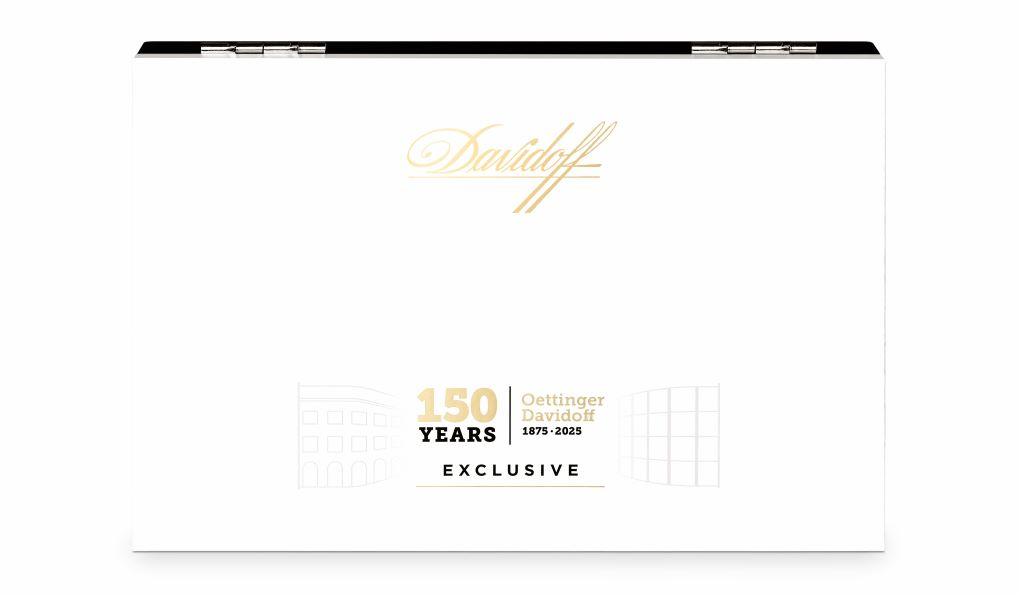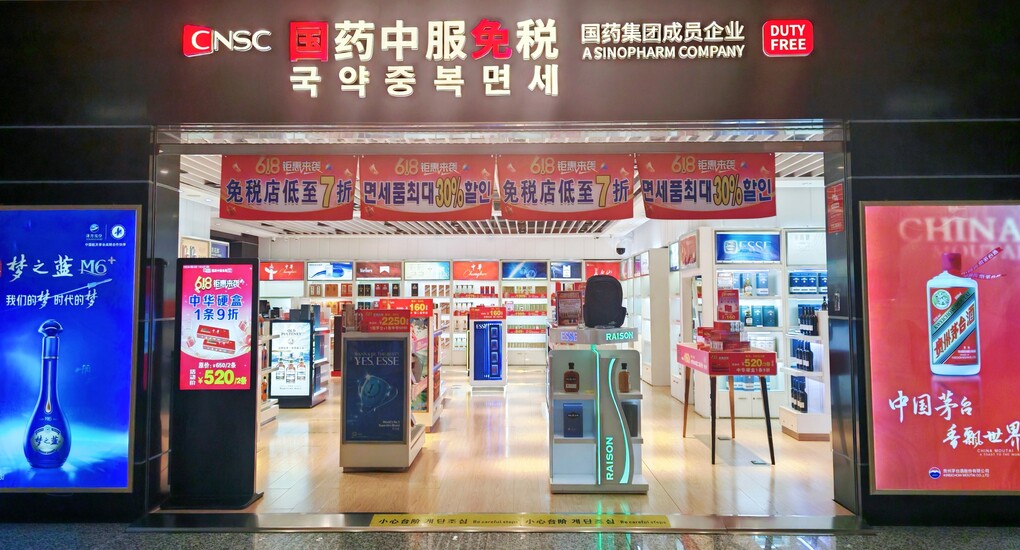UK. British American Tobacco (BAT) has unveiled a +25% rise in pre-tax profits for the six months to 30 June, 2004, to £941 million (US$1,717 million). Turnover rose from £12,416 million (US$22.6 million) to £16,537 million (US$30.2 million).
Duty free was singled out for positive mention in Asia Pacific, where “generally higher’ sales in the channel contributed to a £26 million (US$27.4 million) hike in regional profits (see below for details).
Chairman Jan du Plessis warned that full-year group results would be “significantly” affected by downtrading in Canada and further strengthening of sterling against the US dollar since the end of June. However, he said an +8% increase in the interim dividend signaled the Board’s confidence in the underlying strength of the business, “while the expected completion of the Reynolds American transaction and our progress in China [towards a manufacturing joint venture] represent important steps in improving our long term prospects.”
The Group said its results have been adversely affected by the strength of sterling and overall market declines in a number of key countries.
Below we present a market-by-market report on BAT’s first-half results. Domestic market performance remains a key driver of travel-retail spending in the tobacco category more than any other.
Profit from the key America-Pacific region was £388 million (US$708 million), down £86 million (US$156.9 million) from the same period last year.
Lower volumes in all the markets except South Korea, growth of the value-for-money segment in Canada, the absence of a £27 million (US$49.3 million) one-off benefit in 2003 for the US and the adverse exchange impact on translation to sterling were the reasons for the reduced profits.
Volumes in the region were down -6% to 48 billion, mainly as a result of lower volumes in Canada and Japan. Group volumes grew by +3% to 396 billion, mainly due to the volumes from acquisitions.
There was some organic growth despite market declines in a number of important countries, such as France, Germany and Japan. Although there were good market share performances, the overall volumes from the four global drive brands Kent, Dunhill, Lucky Strike and Pall Mall were “disappointing” with a decline of -1%.
Kent grew by +1% as an outstanding performance in Russia and growth in Romania were almost offset by declines in Japan and Iran. In South Korea Dunhill recovered from the first quarter competitor activities and resumed its good performance but, with lower volumes in Malaysia and a number of smaller markets, overall volumes declined by -3%.
Lucky Strike gained market share in its main markets of Japan and Germany but was affected by market size reductions and consequently volume was down by -4%. Pall Mall maintained its growth with volumes up +3% as Italy, the U.S., Russia and Germany reported good progress.
Imperial Tobacco Canada contributed £169 million (US$308.4 million) of profit before restructuring costs, down £44 million (US$80.3 million) from last year, due to lower volumes, the continued shift in sales mix and exchange rate movements partly offset by reduced operating costs.
Although Canada’s total industry volumes declined slightly, the value-for-money segment continued to grow strongly with much industry activity. In May, Imperial repositioned Matinee to compete more vigorously in this segment with encouraging initial signs. Imperial’s market share was lower at 59% with du Maurier and Player’s, both premium brands, remaining the number one and two brand families in Canada.
Brown & Williamson’s contribution from its US cigarette business was -13% lower at GBP110 million (US$200.7 million) reflecting adverse exchange rate movements and the non-recurrence of a gain on the settlement of certain disputed MSA payments. Excluding this gain, the increase at comparable rates of exchange would have been +23% as a result of lower supply chain and marketing costs, partly reflecting one-off trade costs last year, which more than offset lower volumes and lower net pricing.
Intense competition continued, but the strategic brands performed well with increased market shares for Pall Mall and Misty. These increases were offset by declines in non-strategic brands, mainly GPC, and Brown & Williamson’s overall market share remained steady at 9.7% compared to 9.8% in 2003.
The Group’s overall market share in Japan was slightly higher as Lucky Strike and Koolcontinued to grow share. Volumes were, however, down as the overall market size continued to decline, leading to a lower profit contribution. In South Korea, Dunhill increased volumes despite competitor activities, although profit was similar to last year due to higher marketing investment.
In Asia Pacific, regional profit of £254 million (US$463.4 million) was £26 million (US$27.4 million) above last year with strong results in Australia, New Zealand, Malaysia, Pakistan, India and generally higher duty free sales. This performance was achieved despite currency weaknesses in Malaysia and India. Regional volumes at 101 billion were +5% up with increases in Pakistan, Bangladesh, India and Vietnam partially offset by lower sales in Indonesia and Malaysia.
Australia and New Zealand continued to deliver strong profit growth through higher margins, volumes and market share. In Australia, the higher margins reflected lower costs and an improved sales mix, with Dunhill and Winfield increasing volumes and market share.
Local currency profit in Malaysia was ahead of last year due to improved margins but volumes were lower as a result of reduced market share and timing of shipments in a very competitive environment. In South East Asia, Vietnam continued to deliver strong profit and volume growth. Profit and volumes in Indonesia were still under pressure due to the expansion of the low-price segment but Lucky Strike continued its strong growth.
Pakistan delivered strong profit and volume growth with continued good performances from Gold Flake and John Player Gold Leaf. In Bangladesh, volumes were higher but local currency profit was slightly lower due to higher marketing expenses.
In Latin America, profit of £190 million (US$346.7 million) declined by £26 million (US$47.4 million) as the lower results from Brazil, Mexico, Chile and Central America more than offset the increases from Venezuela and Argentina. The contribution from the region was depressed by the general weakening of exchange rates against sterling.
Volumes of 72 billion for the region were similar to last year as the increases in Venezuela, Chile and Central America and the impact of the acquisition in Peru were offset by declines in Brazil, Mexico and Argentina. Profit in Brazil was affected by lower cigarette and leaf volumes, as well as the depreciation of the real against sterling and higher marketing and other costs. The lower cigarette volumes were the result of excise-driven price increases.
In Mexico, profit was down mainly as a result of lower volumes, driven by the contraction of the market, and the devaluation of the currency. Competitor activities at the end of the quarter resulted in a decline in market share despite a strong performance from the group’s premium brands. Profit increased in Argentina with higher margins driven by both price increases and lower costs. However, the price increases resulted in a decline in volumes as a result of the growth of local manufacturers and the illegal market.
In Chile, profit was slightly lower, affected by the timing of expenses. However, overall volumes were up, mainly driven by Belmont, reflecting the success in reducing illicit trade.
Profit in Venezuela rose due to price increases, coupled with higher volumes, partly offset by the devaluation of the currency and the timing of expenses. Volume growth and higher market share were achieved mainly by the performance of Consul.
In Central America, volumes were higher but profit was lower due to reduced margins and exchange rate movements.
Total profit in Europe increased by £77 million (US$141 million) to £339 million (US$619 million), mainly attributable to the acquisition of Ente Tabacchi Italiani (ETI) in Italy at the end of 2003. The region also benefited from cost savings following the closure and reorganisation of factories in the UK and Benelux, as well as strong growth from a number of businesses, although these benefits were offset by lower profits in France, Germany and Hungary.
Total volume grew by +9%, reaching 128 billion, primarily due to additional volume from newly acquired businesses in Italy and Serbia, and continued growth in Russia, which more than offset the market related declines in Germany, France, Hungary and the Netherlands.
In Italy, following the acquisition of ETI, the integration of the new business is going well. The total business in Italy contributed profit of around £86 million (US$157 million) which is ahead of expectations. While there was an overall reduction in size of the Italian market, the Group’s market share was 31.3% with Pall Mall increasing its share from 6.1% to 6.6%.
In Germany, Lucky Strike and Pall Mall continued to grow share, with total market share similar to last year. A -13% decline of industry cigarette volumes, following the excise related price increases, led to a reduction of both volumes and profit.
However, in this market the Group benefited from its strong presence in other tobacco products through its Smoking Tobacco and Cigars operations, so that total tobacco volumes in Germany were only down -7%.
Market share in France slightly increased with Lucky Strike growing share but profit and volumes were both down. These declines are mainly attributable to total market shipments contracting significantly after consecutive large excise increases in October 2003 and January 2004.
In Switzerland, profit and volumes showed a small decline following the October excise increase. Higher market share was driven by Parisienne while Lucky Strike maintained its share.
Lower overheads led to improved results in the Netherlands despite lower volumes, following a large excise increase in February, while higher margins contributed to profit growth in Belgium.
Continued strong volume growth, higher market share and improved mix, led by a significant increase of Kent volumes, resulted in an excellent profit from Russia. Higher market share in Romania was driven by the growth of Kent, Pall Mall and Viceroy, and, coupled with improved margins, this led to a much better result. In Poland, profit growth was primarily a result of higher volumes and improved market share led by Golden American and Pall Mall, whereas lower volumes were behind a profit decline in Ukraine. In Hungary, despite an increase in market share, profit was significantly lower due to successive excise increases which led to a 22% reduction in the total market size and a 15% decline in Group volumes.
The Smoking Tobacco and Cigars operations showed strong profit growth, led by the growth of volumes in all major product groups.
In the Africa and Middle East region, despite the continued investment in new markets, notably Turkey, and the difficulties in Zimbabwe, profit at GBP175 million was GBP17 million higher with a strong performance from South Africa.
Volumes increased by 2% to 47bn mainly as a result of the strong growth in Nigeria, partly offset by declines in South Africa and Zimbabwe.
Profit in South Africa improved strongly with higher margins and currency stability. Volumes were lower as the total market declined but Peter Stuyvesant, Rothmans and Dunhill made share gains, although overall market share was slightly down.
In Equatorial Africa, volumes were lower than last year, principally reflecting the economic conditions in Kenya and Zimbabwe. Profit improved slightly as a result of cost savings in Kenya and improved leaf margins in Uganda.
Volumes were higher in the West Africa area, attributable to the Nigerian market where improved distribution led to a 7 share point increase over last year to 72%. Profit for the area was also ahead.
In the Middle East & North Africa area, profit was slightly lower as a result of market entry costs in North Africa and higher brand support expenditure in the Middle East, largely offset by margin gains in Saudi Arabia. Volumes increased with good performances by Viceroy and Craven ‘A’ in Iraq, partly offset by volume declines in the Gulf and Iran.
MORE STORIES ON BAT
Pioneering BAT joint-venture in China challenged by state monopoly – 21/07/2004
>”˜Pirate’ retailer wins sea battle, may lose customs war – 19/07/04Dubai resident wins a US$123,000 dream home in BATI prize draw – 28/06/2004




